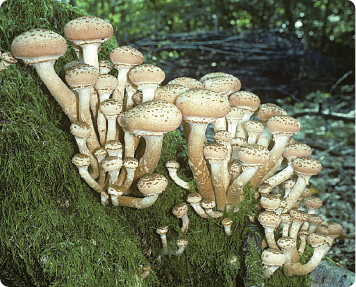
Most naturalists recognise the significance of the role played by fungi in decay and the recycling of nutrients from dead organic matter back into the environment. But beyond that, for many, fungi are little more than colourful curiosities in autumn woodland. Worse still, people whose interest is primarily in trees often view fungi with suspicion, concerned about the threat of disease. True, a few fungal species are capable of destroying a precious specimen tree. However, the real relationship between trees and most fungal species (indeed between fungi and almost all plants) is entirely positive and profound, and illustrates the dangers of generalisation. It involves an intimately close, and mutually beneficial, relationship called symbiosis. That between birches and the Fly Agaric Amanita muscaria is often quoted, but in reality almost every trees species found in Britain depends for its survival upon a unique relationship between its roots and specific soil fungi.
Gardeners occasionally come across networks of fine threads in the soil. Essentially these are the body of a fungus, the mycorrhiza, a term that means ‘fungus root’. Several different types of mycorrhizal relationship exist between fungi and plants but ectomycorrhizal ties are of particular significance to trees. In this relationship the fungus sheaths the tree roots and hyphae (fungal threads) extend into the soil and into the cortical layer of the root cells. The fungus derives almost all of its energy requirements, particularly as sugars, from the photosynthetic reactions of the tree’s leaves. In return the tree obtains nitrogen and phosphorus, otherwise in short supply, via fungal action in the soil. Many of the toadstools that adorn the woodland floor in autumn are the fruiting bodies of these ectomycorrhizal fungi. This explains why, in many cases, certain toadstool species are found only under specific trees. For further information about the subject, and about fungi in general, see the excellent Fungi in the Collins New Naturalist series (see p.).

Honey Fungus may be dreaded in a garden context, but its role in the decomposition and recycling of nutrients from dead timber is profound.
In the case of a few fungal species, their relationship with trees is less benign and parasitism is well documented, as are instances where fungi invade an already diseased or damaged tree, hastening its end. It is a short step from this strategy to that found in the Honey Fungus Armillaria mellea, which is capable of penetrating seemingly healthy trees and ultimately causing their demise.
Arguably the most important environmental role played by fungi, of course, is in decomposition. Without the process of decay, nutrients locked up inside dead organic matter would remain there and the cycle of life would grind to a halt. Although fungi are not the only agents of decomposition (bacteria obviously have a significant part to play and the mechanical action of many insects is important too), their role is vital. In the context of trees and woodland, they ensure that fallen leaves are recycled and that nutrients contained within fallen timber enter the woodland soil.
Woodland fungi come in all shapes, sizes, colours and growing habits. Among the more intriguing are the Pinecone Cap Strobilurus tenacellus
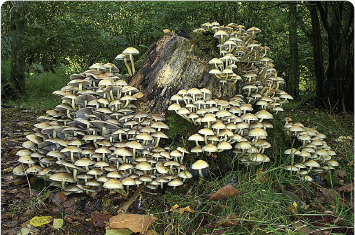
which grows on decaying pine cones; the Sulphur Tuft Hypholoma fasciculare
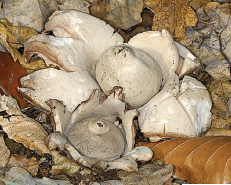
which lives in decaying stumps; the Collared Earthstar Geastrum triplex
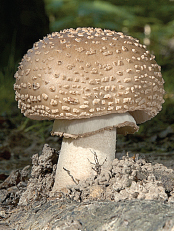
which appears in leaf litter, often under Beech or pines; the Blusher Amanita rubescens
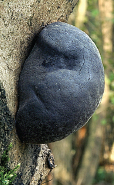
which is associated with oaks; King Alfred’s Cakes Daldinia concentrica
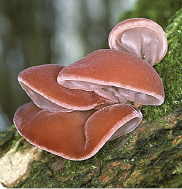
found on dead wood, often that of Ash; the Jelly Ear Auricularia auricula-judae
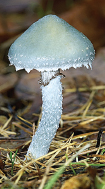
which grows on Elder branches; the Blue Roundhead Stropharia caerulea
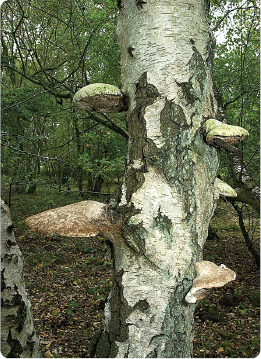
found among fallen pine needles; and the Birch Polypore Piptoporus betulinus which grows on birch trunks.